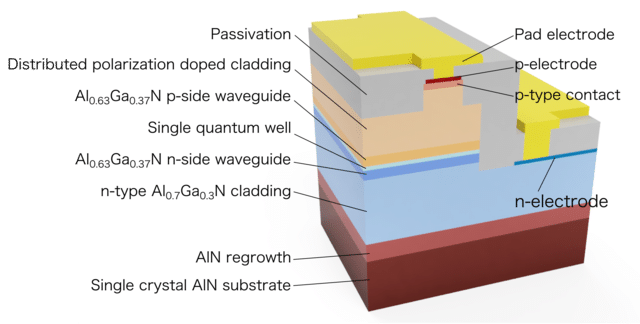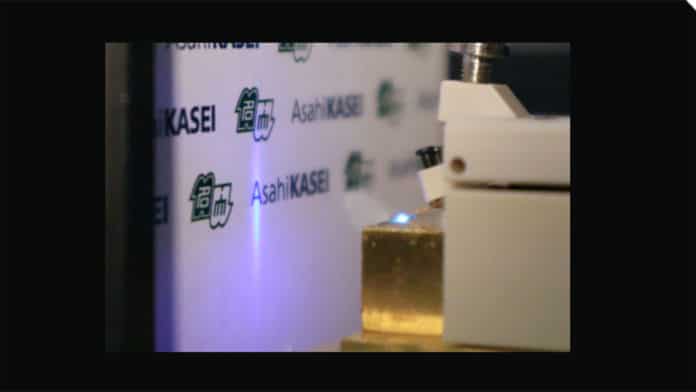Scientists from Nagoya University, in collaboration with Asahi Kasei Corporation, have devised a 271.8 nm deep-ultraviolet laser diode for room temperature operation. It emits the world’s shortest lasing wavelength under pulsed [electric] current injection at room temperature.
The lasing wavelength of this diode is 271.8 nm, with a pulse duration of 50 ns and a repetition frequency of 2 kHz.
To develop this laser diode, scientists used a high-quality aluminum nitride (AlN) substrate as their base for building up the layers of it. This is necessary as lower quality AlN contains a large number of defects, which ultimately impact the efficiency of a laser diode’s active layer in converting electricity into light energy.
Scientists noted, “this aluminum gradient enhances the flow of positively charged holes. A top contact layer was finally added that was made from p-type AlGaN doped with magnesium.”
Scientists then designed quantum well to separate a ‘p-type’ and ‘n-type’ layer (made from aluminum gallium nitride (AlGaN)) of the diode. When passing the current through the diode, positively charged holes in the p-type layer and negatively charged electrons in the n-type layer flow towards the center to combine, releasing energy in the form of light particles called photons. The quantum well also helps the diode to emit deep UV light.

Cladding layers, also made from AlGaN, were placed on either side of the p- and n-type layers. The cladding below the n-type layer included the doping of silicon materials. The coating above the p-type layer underwent distributed polarization doping, which dopes the layer without adding impurities. The aluminum content in the p-side cladding was designed so that it was highest at the bottom, decreasing towards the top.
The polarization doping of the p-side cladding layer meant that a pulsed electric current of “remarkably low operating voltage” of 13.8V was needed for the emission of “the shortest wavelength reported so far.”
The team is now conducting advanced joint research with Asahi Kasei Corporation to achieve continuous room temperature deep-UV lasing for the development of UV-C semiconductor laser products.
The study is published in the journal Applied Physics Express.
